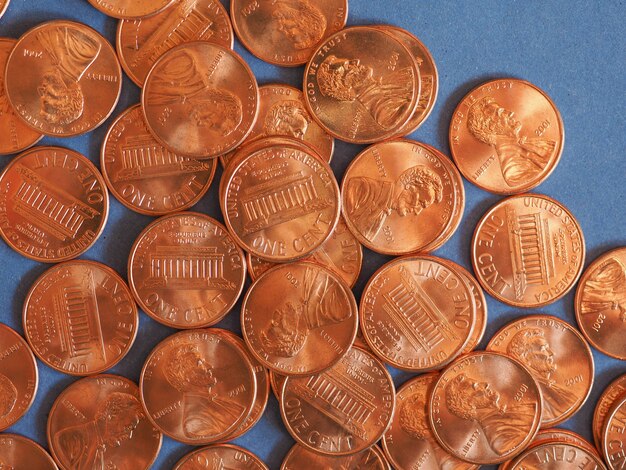Exploring Copper Investment: A Comprehensive Guide for 2023
In an ever-evolving financial landscape, diversifying your investment portfolio is not just advisable but essential. While traditional stocks and bonds are common go-tos, alternative investments such as commodities can offer unique benefits. Copper, due its vast industrial applications, has gained attention as a viable investment avenue. Whether you're new to investing or seeking to expand your portfolio, understanding how to invest in copper will enhance your financial strategy.
🛠️ Why Invest in Copper?
Copper is often referred to as the "metal of the future." It’s an essential component in many industries, including construction, electronics, and emerging green technologies like electric vehicles and renewable energy systems. Here are a few reasons why copper holds investment potential:
- Industrial Demand: With rapid industrial growth in emerging economies, the demand for copper is increasing.
- Technological Advancements: Innovations in technology often require copper, boosting its market value.
- Economic Indicators: Copper prices often reflect economic health, making it a bellwether for economic activity.
- Sustainability Themes: As a key component in green technologies, copper is vital for sustainable energy transitions.
🔍 Understanding the Copper Market
Before diving into copper investments, it’s crucial to grasp the dynamics of the market.
Supply and Demand
The copper market is influenced mainly by the balance of supply and demand. Major mining countries like Chile and Peru drive supply, while industrial giants like China command demand. Any shifts in these dynamics—due to geopolitical issues, environmental regulations, or technological innovations—can significantly impact prices.
Market Volatility
Similar to other commodities, copper prices are subject to volatility. Factors such as currency fluctuations, trading policies, and global economic conditions contribute to this. Understanding these can help investors set realistic expectations and plan accordingly.
🛤️ Ways to Invest in Copper
Investing in copper can be done through several approaches, each offering distinct advantages and considerations. Here are the primary methods:
1. Physical Copper
Investing directly in physical copper means buying bars or coins. This tangible asset offers a hedge against monetary inflation, but it requires secure storage and insurance.
2. Copper Futures
Copper futures are financial contracts obligating the buyer to purchase copper at a predetermined price in the future. This method suits those who anticipate exact price movements and are willing to accept higher risks.
3. Copper Stocks
Purchasing stocks of companies involved in copper mining or extraction is another approach. This indirect investment benefits from both copper prices and company performance, providing potential dividends.
4. Copper ETFs
Exchange-Traded Funds (ETFs) offer diversified exposure to copper. ETFs might include multiple companies or futures contracts and are traded like stocks. They balance potential risks and rewards, making them attractive to many investors.
5. Mutual Funds
Copper mutual funds pool capital from multiple investors to buy assets, including stocks and bonds related to copper. This method promotes diversity and is managed by professional portfolio managers.
📝 Key Considerations
Venturing into copper investments requires careful consideration of several factors. Regardless of the approach, ensure you consider the following:
Market Research
Before investing, conduct thorough research about copper market trends. Understanding historical price movements, economic factors influencing copper demand, and future projections helps in making informed decisions.
Investment Time Frame
Consider your investment horizon. Are you in it for short-term gains or a long-term commitment? Copper can fit either profile, but understanding the time frame aligns expectations with risks.
Risk Management
Copper investments interact with numerous risk factors, including market volatility and economic uncertainties. Setting stop-loss orders and diversifying your portfolio can mitigate risks.
Storage and Security
If opting for physical copper, prioritize security. Proper storage and insurance safeguard your investments against physical risks.
Environmental and Ethical Concerns
Consider the environmental impact and ethical practices of copper production. Investing in companies with sustainable practices aligns with socially responsible investing principles.
💡 Tips for Beginners
For newcomers to copper investment, taking a cautious, informed approach is essential.
Start Small
Gradually increasing your exposure to copper can help mitigate initial risks. Start with a small allocation and scale up as you gain confidence and understanding.
Seek Expert Advice
Consult with a financial advisor experienced in commodities. They can guide you based on your financial situation and goals, ensuring you make informed decisions.
Stay Updated
Continually update your knowledge on market changes and technological advancements. Copper's future value is tied to evolving industries, and staying informed ensures your investments remain relevant.
📊 A Quick Summary
Here's a quick overview of investing in copper:
| Aspect | Key Features |
|---|---|
| Investment Options | Physical copper, futures, stocks, ETFs, mutual funds |
| Key Benefits | Industrial demand, technology, economic indicators |
| Risks | Market volatility, geopolitical influences |
| Optimal Strategies | Market research, diversification, professional advice |
| Tools & Resources | Latest market reports, financial news platforms |
🚀 Final Insights
Investing in copper may be less traditional than stocks or bonds, but it can offer unique advantages, especially in an economy leaning toward technological and sustainable progress. By considering the various ways to invest and assessing key market factors, investors can better navigate the copper landscape. Remember to embrace ongoing education and expert advice, which can significantly enhance your investment experience.
Embarking on this journey is not merely about adding a commodity to your portfolio; it's about recognizing the potential of a versatile and future-forward asset. Copper lies at the heart of both industrial growth and technological innovation, making it not just an investment, but a part of the transformation toward a more sustainable future.

Related Topics
- a Couple Won The Powerball. Investing It Turned Into Tragedy.
- a Few Consideration When Investing For Preferred Stock Equity
- a I Etf
- a Positive Return On Investment For Education Happens When
- a Positive Return On Investment For Higher Education _____.
- Are Annuities a Good Investment
- Are Annuities Good Investment
- Are Annuities Good Investments
- Are Automatic Investments a Money Skill
- Are Bonds a Good Investment